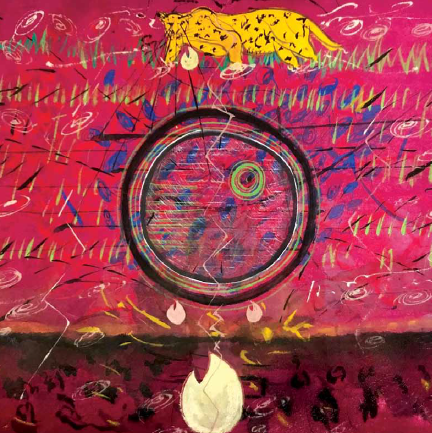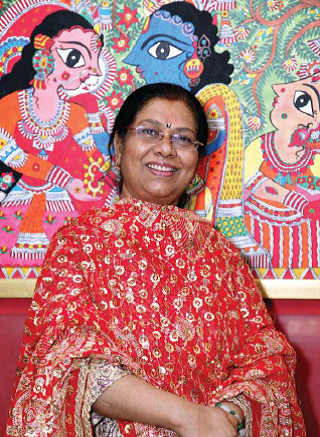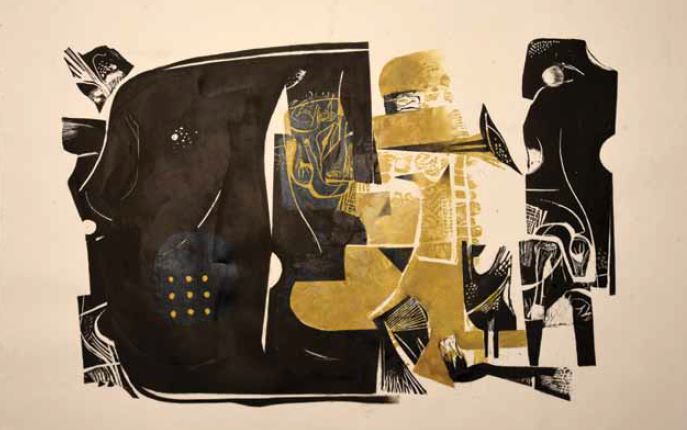
In seeking to rework the archival in his art, veteran artist S.G. Vasudev strives to retain the echoes and traces of the past, while introducing the new in his collages
Veteran artist S.G. Vasudev, 82, one of the most prolific proponents of ‘indigenous modernism’ in India, began to work with collages when the pandemic confined him to his home studio. Vasudev, who studied art under K. C. S. Paniker in 1966, and has always worked across multiple mediums simultaneously, from oil on canvas and ink on paper to copper relief and silk tapestries, says those were grim times and he was looking for something to lighten the mood, infuse gaiety and create positive affirmations. The result: his artworks are allegorical, rich with memory, resplendent with allusion, imbued with myth and metaphor. They are endearingly child-like in spirit and their energy is infectious. The legends and lore that have been part of his canvas for decades, the leitmotifs that feature as constant refrains from the paintings, copper work and tapestries are still the central themes. What sets these collages apart is the weaving of new stories into the old. In seeking to rework the archival in his art, he strives to retain the echoes and traces of the past, while introducing the new. He meticulously conjures his canvases when it comes to painting with oil-based paints, which is his preferred medium. He preps his canvas with texture, upon which layer after layer of paint is applied with intricate strokes that contrast with the light, delicate washes. Adding colour and removing them to expose the layer beneath for each of the layers to shine through is his intention. Emerging from these backgrounds are forms that are ambiguous and merely suggestive of a face or a tree or a figure that truly invite the viewer to formulate their own conjecture of the artist’s purpose. The Mysoreborn artist, who relocated to Bengaluru from Cholamandal after the passing of his wife and artistic partner Arnawaz in 1988, says Tamil Nadu was his home state and Kannada was important to him. A founder-member of the Cholamandal Artists’ Village on the outskirts of Chennai, Vasudev says he belongs to Chennai as much as he belongs to Bengaluru. Founder and managing trustee of Arnawaz Vasudev Charities, a nonprofit organisation providing financial assistance to young artists and art-related initiatives since 1989, Vasudev has helped establish Visual Art Department at the Bangalore University, National Gallery of Modern Art Bengaluru, Ananya Drishya and Art Park, both, artists’ initiatives..


He received recognition as a painter early in his career. While he was a student of the Government College of Art, Madras, he won the National Award from the All-India Lalit Kala Akademi in 1967, followed by awards from State Academies of Karnataka, Tamil Nadu and Kerala, besides prestigious Karnataka Rajyotsava Award, Varnashilpi Venkatappa Award and Paniker Puraskaram. His most familiar and loved theme is the Vriksha, which some see as the Tree of Life. Inspired by Kannada poet Bendre’s Kalpa Vriksha Brindavan in 1967, Vasudev developed it continually. By 1973, the Tree had become central to his work. It helped him advance, offering many possibilities technically. He also explored the theme of “Maithuna” (Act of Love) standing for the union between the female (the prakriti) and male (the purusha) principles that exist in nature almost in a yin-yang fusion of being, through contrasting forms and colours, a series of drawings and copper reliefs. Eventually his tree grew into faces titled “Humanscapes” and “Earthscapes.” The tree is still sometimes visible in his series titled “Theatre of Life,” and “Rhapsody.” Vasudev has participated in several important group exhibitions in India and abroad.
In addition, he has held solo exhibitions indifferent parts of India and the world, including the USA, Canada, England and Germany. Exhibitions of his drawings based on the lateA.K. Ramanujan’s poetry and translations, titled “Tribute to Ramanujan,” have been held in Bengaluru, Chennai, New Delhi, London and Chicago. A retrospective of his work titled “Inner Resonance – Return to Sama” was held at National Gallery of Modern Art, Bengaluru, and Mumbai, and also at Lalit Kala Akademi galleries in Chennai during 2018-2019.









 " >
" >
 " >
" >